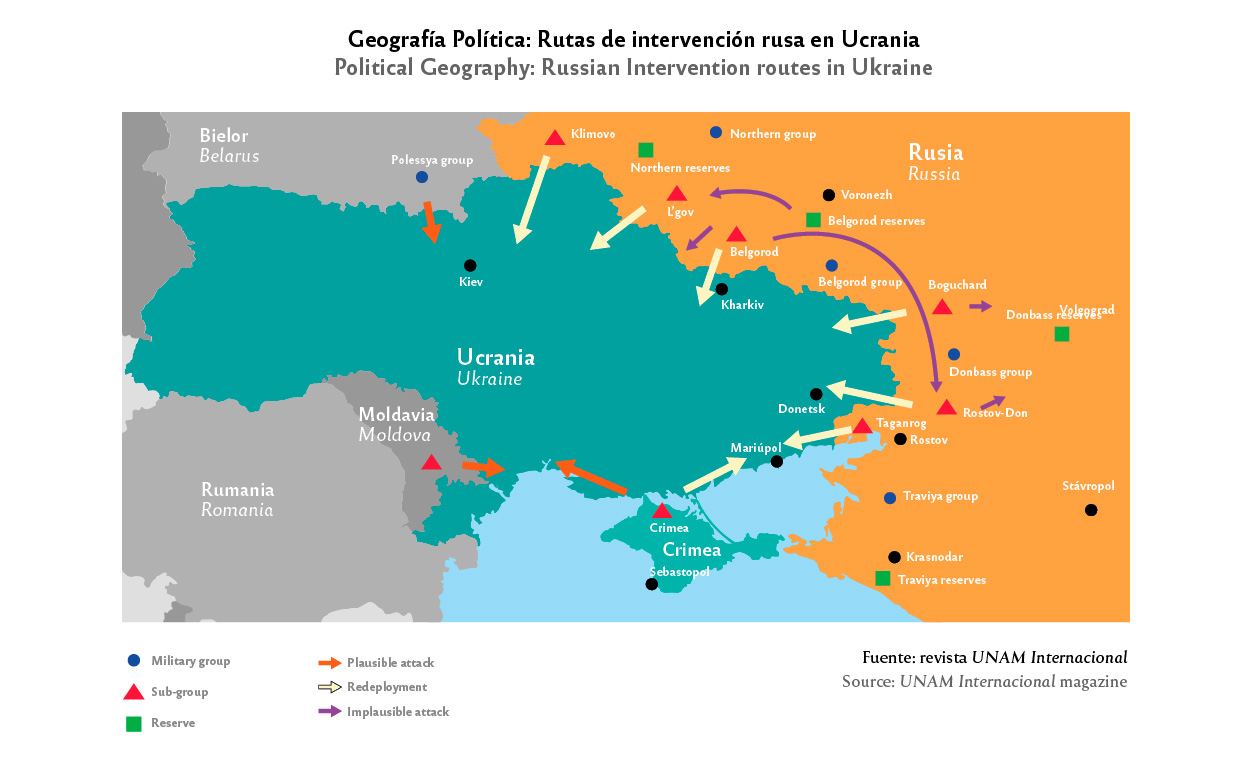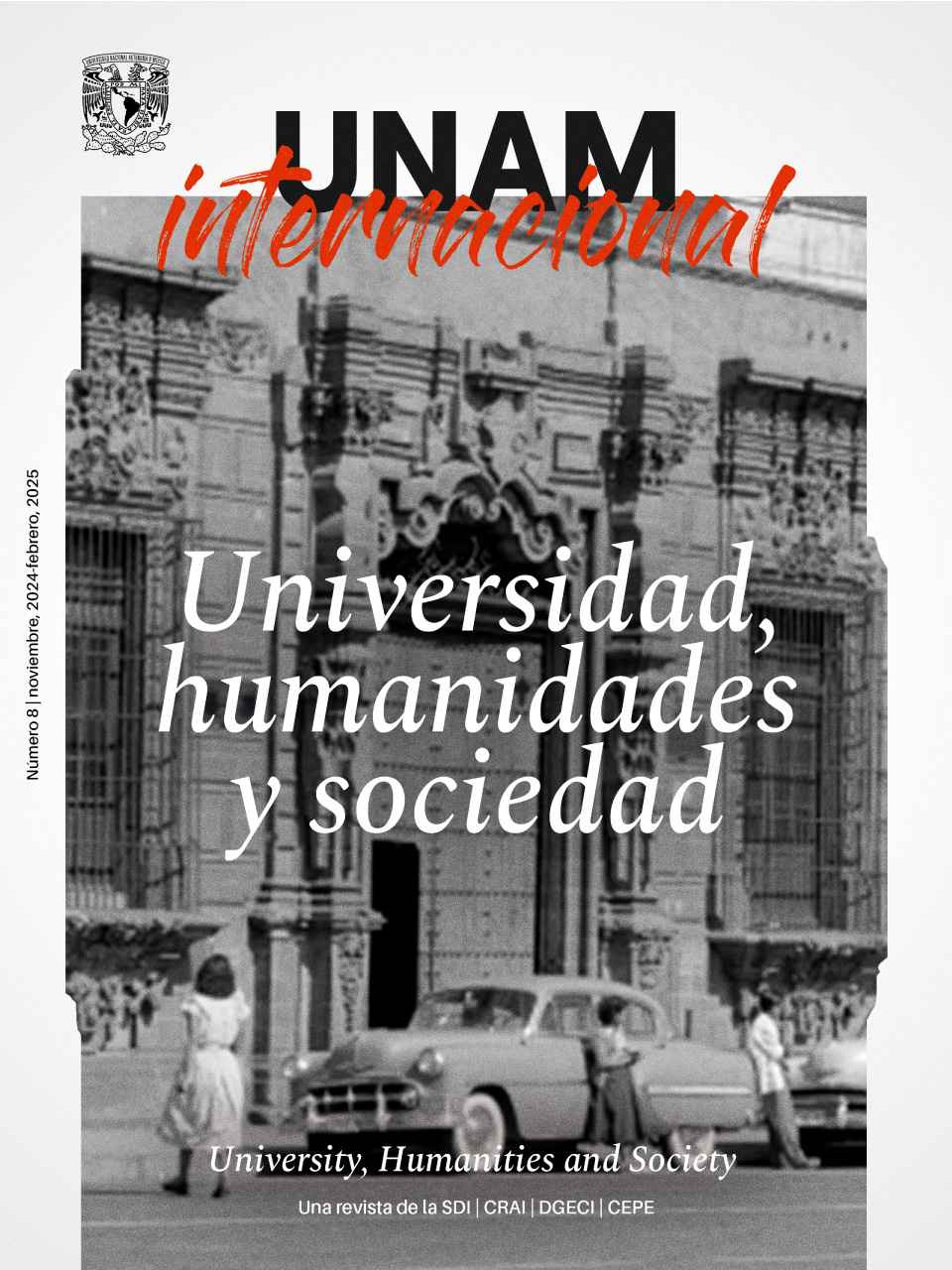30-06-2022
The Russian-Ukrainian Conflict. Background, context and perspectives
THE SECOND COLD WARBetween 1945 and 1991 what we know as Cold War dominated the international scene. However, this changed around the begining of the 21th century when its relevance decreased as a result of the relatively weak position in which Russia found itself in the wake of the fall of the “Iron Wall” and the dismantling of the former Union of Soviet Socialist Republics (USSR).
During the two decades from 1990-2010, the West (the USA and the European Union) attracted to their own economic, financial, commercial and monetary sphere of influence, the European Union (EU), countries which until recently were members of the Russian-led USSR or operated under its control.
Between 1991 and 2007, Bulgaria, Slovakia, Slovenia, Estonia, Hungary, Latvia, Lithuania, Poland, the Czech Republic and Romania filled in the requirements to sign their incorporation and membership applications to become part of the EU.
This process was mirrored in the military domain, as between 1999 and 2004 the Czech Republic, Hungary, Poland, Bulgaria, Estonia, Latvia, Lithuania, Romania, Slovakia and Slovenia joined the North Atlantic Treaty Organisation (NATO), armed wing of the West.
In 2007, during the Security Conference in Munich, Russian president Vladimir Putin sketched its new foreign policy towards the West and the unilateralism of the USA and more importantly that of NATO. The period that began with that speech —which heralded the new position of Russia and the increase of frictions between it and the West— and now, is what we refer to as the Second Cold War.
BACKGROUND
As a recent fact that places in context the confrontation between these two blocks, currently materialised in the ongoing Russian-Ukrainian conflict, it must be remembered that in 2011 there was a movement known as the Arab Spring, which starting in Tunisia, later spreading to the North-African countries of Libya and Egypt, eventually reached the Eastern Mediterranean. The USA intervened firmly in Syria (Moscow’s partner, friend and ally) in support of anti-government rebel forces. Prima facie, the aim was to ride in the wave of the Arab Spring to depose the dictator Bashar Al Asad and to replace him with a puppet government loyal to Washington. Had the USA succeeded, it would have landed a heavy geopolitical blow to Russia, as it would have wrestled out of its political sphere yet another country, and would also have deprived Russia of the strategic military base at Tartus in the heart of the Easter Mediterranean.

The atmosphere of confrontation reached a climax at the end of 2013 and the beginning of 2014 in Ukraine, during the Maidan Uprising, or Euromaidan that led to the fall of pro-Russia president Víktor Yanukóvich. He had, under pressure from Moscow, rejected an already negotiated agreement of association with the EU, choosing instead to strengthen its links with Russia. This led to the destitution of Yanukóvich by the Ukrainian parliament who also called for new elections that brought into power the pro-European Petro Poroshenko.
This was a turning point, as it meant a defeat to Russian interests. Putin, however, gambled with the fact that the population of the Crimean Peninsula is largely Russian-speaking, and has strong ethnic, cultural and historic links with Russia. He organised a fast-track referendum that led to an independence declaration and to the immediate annexation of Crimea by Russia.
Once more, a strategic military base was at stake: Moscow would not have allowed Ukraine to walk away to the West taking along with it the naval base of Sevastopol, in Crimea, which is the headquarter of the Russian fleet in the Black Sea. It is clear that in both Syria and Ukraine, the West attempted to wrestle out of Russia important military bases: Taurus and Sevastapol, which in Putin’s logics and military strategy would have been unacceptable.
Had the West accomplished those objectives, Russia would have experienced a substantial reduction of its naval power, as it would have lost two of six naval bases at its disposal, the other four being those at the ports of Baltiysk (Baltic Fleet), Severomorsk (Northern Fleet), Vladivostok (Pacific Fleet) and Astrakhan (Caspian Fleet).
Coinciding with the referendum and annexation of Crimea by Russia, there sprang, also with Russian support, several pro-Russian separatist militias in Eastern Ukraine, particularly in the provinces of Donetsk and Lugansk, in the Donbass region. The fight between rebel and Ukrainian forces there has taken the lives of fourteen thousand people between 2014 and 2022.
CHRONICLE OF AN ANNOUNCED WAR
It should be recognised that Putin has repeatedly warned that the EU’s, and more importantly, NATO’s expansion towards Russia’s borders with Eastern Europe endangered the national security of his country, and that, should Ukraine —which incidentally was invited to join NATO since 2014— did not assume a clearly neutral stance, Moscow would take any measure it deemed necessary to protect its interests.
The invasion of Ukraine by Russia could be seen as the chronicle of an announced war, given all the signals pointed to that since the end of 2021, which made it clear that it would happen. This is particularly true of the enormous concentration of Russian troops along the common borders.
It is likely that the conflict will linger indefinitely because the West is providing economic and military aid to Ukraine, with the aim of cornering and bogging down the Russian army on the Donbass, weakening it morally and militarily, and ultimately forcing the Russian government into a spiralling expenditure to keep the military campaign going.
Russia, on the other hand, is now following “Plan C” after the previous two failed. “Plan A”, was to rapidly reach Kiev, depose president Volodímir Selenzki, and install a pro-Russian governor, was clearly not achieved. “Plan B”, to get a hold of the Eastern half of Ukraine, where most of the Russian-speaking population lives, was also not fulfilled. The third plan is to conquer the Donbass region so as to establish a corridor between Russia and the Crimean Peninsula.
All the above constitutes a chapter in the largely prolonged geopolitical struggle between the big powers which, by the way, are not concerned in the least with international law, international humanitarian law, or human rights. The impact on the population, the wounded and the dead civilians, are sad, regrettable, outrageous collateral damage.
Eduardo Alfonso Rosales Herrera is doctor in International Relations and full-time lecturer, at the School of Higher Studies-Acatlán, UNAM.
nbsp;
English version by Constantino Macías.
English version by Constantino Macías.
